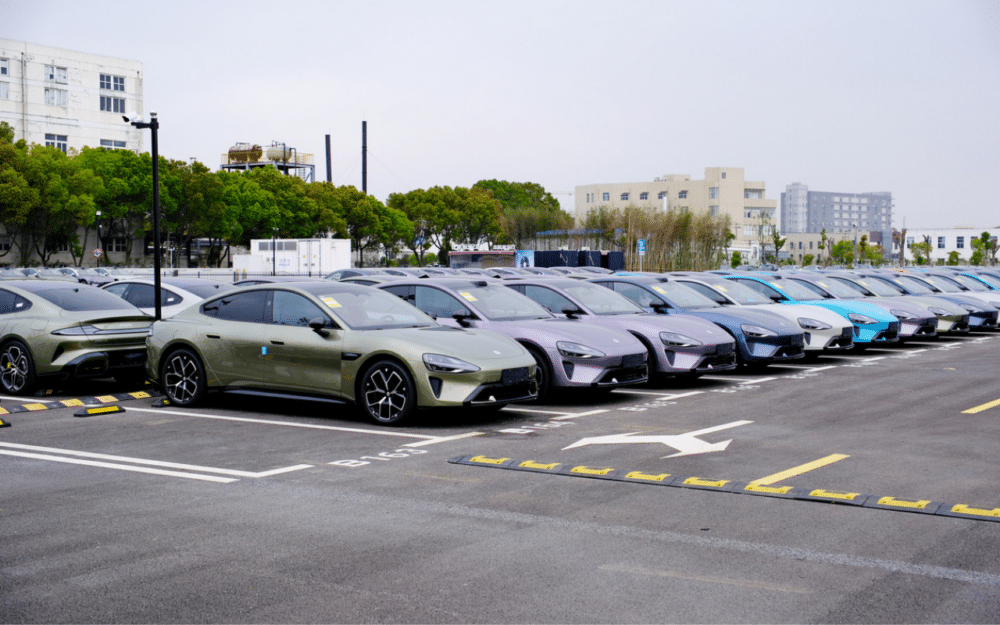The automotive industry in China is undergoing significant transformations in 2024, driven by advancements in EV sales and changing market dynamics.
China’s Electric Vehicle Market is Booming and Expanding
China’s electric vehicle (EV) market is experiencing rapid growth and transformation in 2024.
New Sales
According to a report by EVMarketsReports.com, China’s sales of new energy vehicles (NEVs) surpassed 1 million units for the first time in August 2024, setting a new record.
The surge in EV sales is driven by a rebound in battery electric vehicle (BEV) sales and a continued increase in plug-in hybrid electric vehicle (PHEV) sales.
In August 2024, BEV sales reached 582,813 units, a 20.8% increase from the previous month, while PHEV sales hit a record high of 444,270 units, up 96.9% compared to August 2023. This growth indicates a strong consumer interest in both fully electric and hybrid vehicles.
International Expansion
China’s EV market is also expanding internationally. Bloomberg reports that in September 2024, China exported over 60,000 EVs to the European Union, a 61% increase from the previous year.
This surge in exports is partly due to impending tariffs imposed by the EU, prompting Chinese EV manufacturers to accelerate shipments. The European Commission may indeed implement a permanent increase in tariffs on electric vehicles imported from China starting November 1, in order to offset the massive subsidies provided by the Chinese government.
Companies like BYD, Xpeng, and Zhejiang Geely Holding Group’s premium EV brand Zeekr are considering local production in Europe to further expand their market presence.
The global EV market is also seeing significant growth, with China leading the way. According to the International Energy Agency, in 2023, nearly one in five cars sold globally was electric. China alone is accounting for almost 60% of new electric car registrations.
This dominance is expected to continue as China’s EV market matures and expands. China’s EV market looks promising. Statista expects a revenue reaching $376.4 billion (€348 billion) in 2024 and an annual growth rate of 2.17% from 2024 to 2029. By 2029, the number of EVs sold in China is estimated to reach 9.57 million units, highlighting the growing popularity and acceptance of EVs among consumers.
READ ALSO
Changing Market Dynamics
In a recent report by Canalys, the Advanced Driver Assistance Systems (ADAS) market in China is undergoing significant restructuring, driven by fierce competition among automakers and tier-one suppliers.
High demand for ADAS
ADAS technologies, including features such as adaptive cruise control, lane-keeping assist, and automatic emergency braking, are becoming increasingly prevalent in Chinese vehicles due to the growing demand for safer, more efficient cars. This demand is further fueled by the Chinese government’s active promotion of ADAS adoption through regulations and incentives aimed at improving road safety and reducing traffic accidents.
Chinese automakers like BYD, Nio, and Xpeng are rapidly integrating ADAS technologies into their vehicles, offering advanced safety features that enhance driver convenience while minimizing accident risks. However, the market is now facing a price war among carmakers. To remain competitive, global tier-one suppliers are focusing on system integration and safety innovations to maintain their edge in this evolving landscape.
In 2023, penetration rates for L2 (Partial Driving Automation) and L2+ ADAS (enhanced features like automated parking) in China surpassed 50%, with integrated driving-parking solutions experiencing almost 100% growth. As Original Equipment Manufacturers (OEMs) strive to balance the development of intelligent driving capabilities with cost-effectiveness, ADAS functions are expanding into both mid-to-low-end and mid-to-high-end markets.
Foreign Competitors
Besides, the “ADAS and Autonomous Driving Tier 1 Research Report, 2023” by ResearchAndMarkets.com focuses on foreign companies. Bosch, Continental, Denso, Hyundai Mobis, and Valeo, to name a few, are making continuous efforts to grab this Chinese market. These companies are developing advanced ADAS and autonomous driving solutions to meet the growing demand in China.





![Image [BUYING GUIDE] How to Choose the Right Industrial Robot?](/wp-content/uploads/sites/3/Industrial-Robot-320x213.jpg)

![Image [Buying Guide] How to Choose the Right Safety Shoes?](/wp-content/uploads/sites/3/Safety-Shoes-320x213.jpg)


![Image [Buying Guide] How to Choose the Right AMR?](/wp-content/uploads/sites/3/AMR-320x213.jpg)